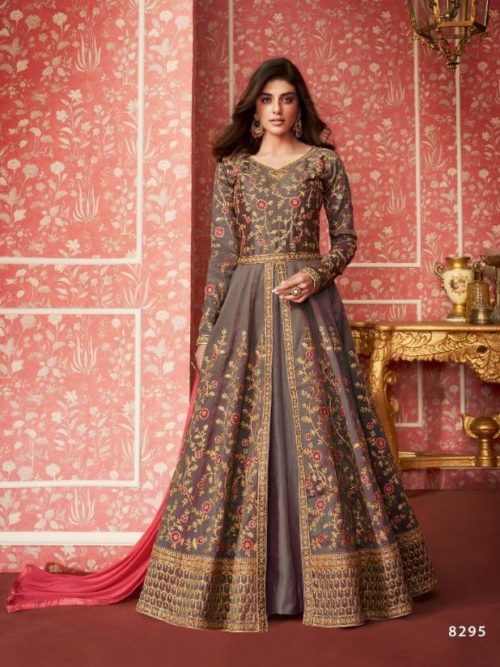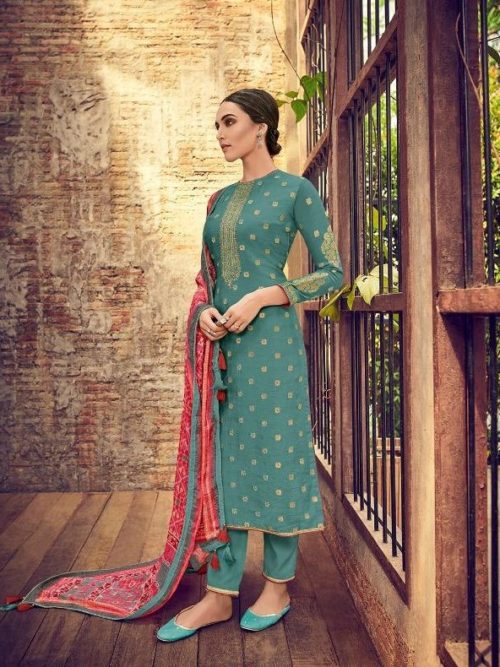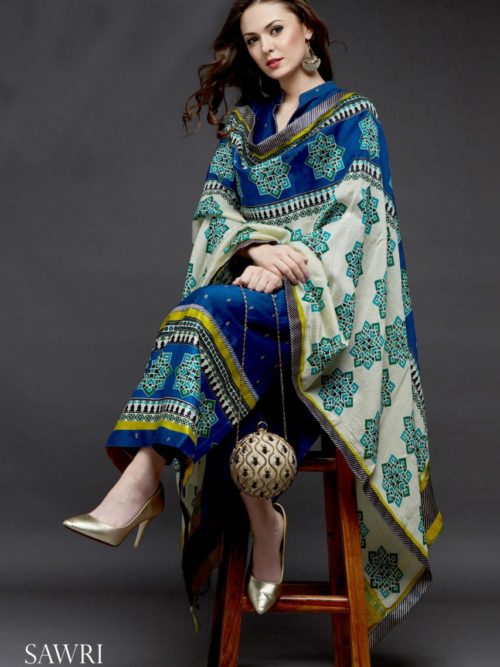SILK SALWAR KAMEEZ & FABRIC
Silk Salwar Kameez: Silk texture, otherwise called ‘Paat’ in East India, Pattu in South India, and Resham in North India, is a characteristic fiber created from the casings of mulberry silkworm by means of a procedure called Sericulture. The yarns delivered from the procedure of sericulture are utilized to weave an assortment of materials.
The texture has a sparkling appearance, however has intruded on examples of weave because of its characteristic fiber. The triangular crystal-like structure enables the texture to refract the lights, henceforth creating different hues in various lighting. Today, India is the world’s second-biggest maker of silk after China. Not just that, India is additionally the biggest shopper of Silk, Celebrations assuming an indispensable job in the everyday existence of any Indian.
The root of Silk goes back to Indus Valley Civilization between 2450 BC and 2000 BC. Be that as it may, the roots are still additionally observed 2500 BC in China.
The preparing strategies of Silk – degumming and reeling, were taken from the Chinese innovation, where Silk was initially accepted to be conceived. Significantly, 97% of the crude silk originates from five Indian states – Andhra Pradesh, Karnataka, Jammu and Kashmir, Tamil Nadu and West Bengal.
Different Types and Forms of Silk used for Silk Salwar Kameez/Dresses/Sarees in India
- Tanchoi Silk: Weaving system which is a mix of silk from the two nations, India and China.
- Garad Silk: Garad starts in West Bengal, and is recognized by its red outskirt and little paisley themes. Silk texture used to weave Garad sarees is delivered by the silk yarns woven near one another which gives the fine surface.
- Jamawar: Jamawar Silk is a defiled type of Pashmina silk that contains a mix of cotton and fleece. This is generally utilized in weaving shawls for the winters.
- Matka Silk: An unpleasant handloom silk texture produced using the waste Mulberry Silk without evacuating its gum (sericin) part, to a great extent delivered in Karnataka and Kashmir.
- Banarasi/Benarasi Silk: A fine variation of silk advancing from the terrains of Benaras or Varanasi, known for gold and silver work of brocade and zari on the texture.
- Mulberry Silk: Purest type of silk separated from Silkworms, more often than not delivered in yellow, white, or greenish-yellow shading.
- Murshidabad Silk: Silk delivered at the ‘Silk Mecca’ of East India.
- Bangalore Silk: Known for its effortlessness and virtue of Silk, Bangalore silk is delivered in the silk homesteads of Bangalore.
- Angora Silk: Known for its delicate surface, the Angora silk yarn is made up from the hide of a quiet ‘Angora’ bunny.
- Silk Embroidery: Intricate examples weaved in silk on different textures.
- Pochampally/Pochampalli Silk: Type of silk starting from the town of Boodhan Pochampally, situated in Nalgonda locale of Andhra Pradesh, famously known as the silk city of India.
- Mysore Silk Crepe: Woven from hand-spun silk yarn and originates from the silk city of Mysore in Karnataka.
- Sournachuri Silk: Originating from West Bengal, Sournachuri Silk has gold string joined in the weave of silk, henceforth giving a rich try to please texture. It is otherwise called the ‘renowned’ sister of the Baluchari Silk saree.
- Crude Silk: Raw Silk is the most normal type of fragile fiber of silk with no turn and is a natural type of silk that can be effectively woven into various textures.
- Kosa Silk: Comes from Chattisgarh, and is known for its delicate surface and dull-tarnish look, henceforth accessible in shades of gold pale, dim nectar, cream, and so on. Kosa is one sort of Tussar Silk.
- Tussar Silk: Also known as Wild Silk, Tussar transmits gold sheen in its texture and is only created in India.
- Muga Silk: Produced uniquely in Assam, Muga silk yarns are absolutely yellow in shading and is considered as most grounded characteristic fiber
- Eri Silk: Also known as Errandi and Endi in many pieces of India, Eri Silk is the most flawless types of silk from the east, with a dull yellow, gold like sheen.
- Dharamavaram Silk: Known for gold-plated outskirts, Dharamavaram silk originates from Andhra Pradesh, and is otherwise called ‘Silk for the Bride.’
- Narayanpet Silk: Originates from Andhra Pradesh, the materials of Narayanpet have a checked surface plan with weaving and the fringe or pallu have multifaceted ethnic structures, for example, a sanctuary.
- Pat/Paat Silk: Produced in Eastern India, Pat silk is known for its particular splendor, high caliber, and solid nature. It comes in splendid white or grayish shades.
- Bunk Silk: A well-mixed mix of cotton and silk, Cot silk is a less expensive estimated silk.
- Kanchipuram: Silk from the town called Kanchipuram in Tamil Nadu, India, one is known for its strength and sparkle. The rich quality joined with an astounding completion makes them last more.
- Bhagalpuri Silk: Known as the ‘Ruler all things considered’, Bhagalpuri Silk starts from West Bengal and is very notable for its kind and striking versatility and prevalent quality.
- Uppada Silk: Also known as Uppada Pattu (Silk in Telugu), Uppada silk originates from Andhra Pradesh. Generally woven in a cotton twist, this one is known significantly by the length and broadness tally of strings.
- Artificial silk: It is fabricated by an engineered fiber like Rayon that particularly looks like the silk fiber; nonetheless, costs significantly less on the facade of assembling and creation.
Check our Silk Salwar Kameez Collection Here!




